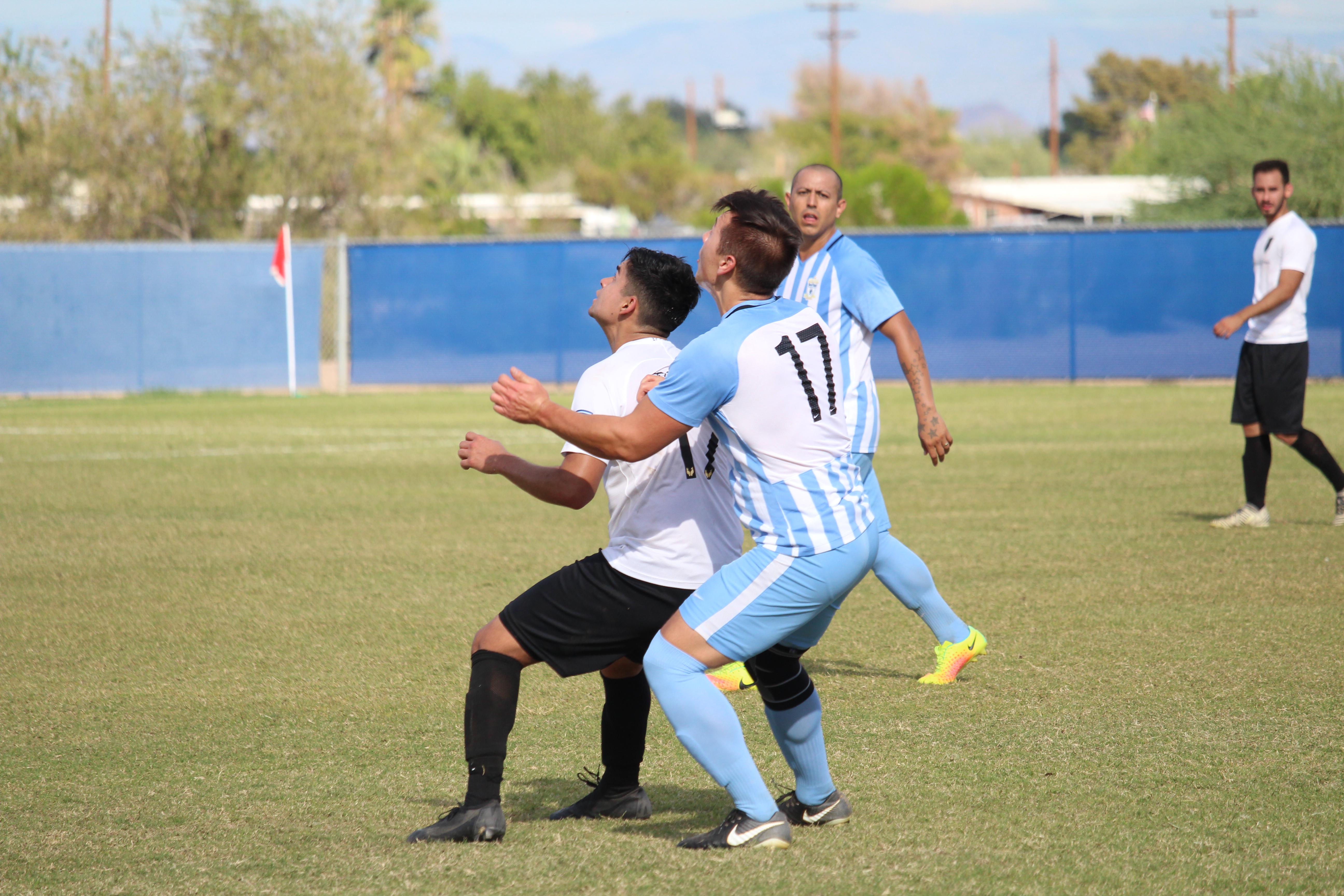Welcome back to Rising Tactics Recap, a weekly column where I attempt to provide insight to Phoenix Rising fans by breaking down some strategic and tactical observations from Phoenix’s latest match.
Saturday night’s 3-0 win over Orange County propelled Phoenix Rising to the top of the Western Conference table. It’s been a remarkable turnaround: the same team that struggled to get results at the beginning of the season has scored 16 goals and held three clean sheets in their last four games.
No one involved in Phoenix’s organization was ever with anything less than seriously contending for first place in the West. On Saturday night, Solomon Asante told the media, “Being in second or third place, we were not happy.”
After the game, coach Rick Schantz had a similar thought: “It’s [first place] where we’re supposed to be.”
Phoenix Rising’s coaching staff and players will get to enjoy the well-earned excitement that comes with sitting on top of a conference, but the work is far from over. To stay in first place, the team must keep improving.
Though Phoenix beat Orange County over the weekend and did many things well, the match highlighted an area of their game that will need to be addressed if they want to stay at the top of the Western Conference: their building out from the back.
Without AJ Cochran, Phoenix’s best passing defender, in the lineup against OC, the defensive unit struggled to start attacks from their own defensive third. There were positive passing moments from the backline – like Joey Farrell’s pass to Solomon Asante that eventually led to the first goal – but overall, the lack of consistent, successful buildout hurt Phoenix Rising on Saturday.
At times earlier in the season, Phoenix struggled to play from the back because their center backs weren’t comfortable moving wide and playing the ball forward. In the season opener against San Antonio, the center backs were visibly uncomfortable shifting wide to create passing angles to move the ball forward.
Now after months of playing in Schantz’s system, Farrell, Doueugui Mala, and Cochran move wide with ease. However, against Orange County, they may have moved too wide.
When I asked Schantz on Saturday about his team’s misplays from the back, he said, “I thought that Joey Farrell was getting a little too wide and the angles were not good between he and [Mustapha Dumbuya]”.
The tape backs up Schantz’s assessment. Look at how far wide Farrell is when he receives the ball from Zac Lubin at the beginning of this clip:
Why is it a problem that Farrell starts close to the sideline?
Farrell’s extra-wide positioning made it easy for Orange County to force him toward the sideline. Because he was so close to the sideline, his teammates had to be closer to the sideline as well, which meant there was little chance for Jon Bakero or Dumbuya to create a pocket of space and find the ball. In the above example, Bakero and Dumbuya couldn’t free themselves from a single OC defender in the above sequence, which resulted in Phoenix (temporarily) losing the ball.
When play starts so far wide, space is compressed, which makes it easier for an opposing team to press and more difficult for the team in possession to pass through the opposition.
There are similar spacing problems in Phoenix Rising’s buildup a few minutes later in the first half. Farrell receives the ball very wide and Orange County easily mark his right-sided options.
The almost vertical passing angles between Farrell and Dumbuya that we saw throughout the match made it relatively easy for OC to mark Phoenix’s wide players and thwart buildup.

To help visualize the importance of center back spacing, notice how much more smoothly Phoenix play the ball out from deep in this clip from last week’s game against Tulsa than in any of the above examples:
Mala is wide, but he is not so wide that he disfigures the triangle that connects the left-sided players. The spacing between him, José Aguinaga, and Junior Flemmings is spot-on.
Getting back to using proper spacing in buildup will go a long way toward helping Phoenix Rising move the ball fluidly from defense to attack. I expect the coaching staff to cover and correct some of the positioning issues from Saturday’s game before the match on Tuesday against Reno.
The Final Third:
- I spent a few minutes talking with Dylan Allen and Alan Underwood of the Orange and Black SoccerCast after the game on Saturday. Both Dylan and Alan attributed Phoenix Rising’s win to a poor performance from Orange County. I think that idea is partially true. Orange County had some egregious mistakes that put them in an early hole. Still, Phoenix did what good teams do: they capitalized on their opponent’s errors.
- Solomon Asante had one of the best games I’ve ever seen from him in a Phoenix Rising uniform on Saturday. It’s no coincidence that Asante is looking as dangerous as ever. Rick Schantz’s system plays to Asante’s strengths: he is comfortable tucking inside from midfield, receiving the ball, and either dribbling forward into space or playing a well-weighted ball behind the opposing backline. Asante was the creative engine on Saturday and it was a sight to behold.
- Did you notice Phoenix Rising’s scheduled rotations in wide areas against Orange County? As the ball moved from side-to-side in possession, Phoenix consistently used the three-part movement that I wrote about last week in possession to shift the opposing defense. As the central midfielder drops into the fullback’s space, the fullback pushes forward and stays wide along the sideline. As that move is happening, the winger tucks inside into midfield and positions himself in a central area between the opposition’s defensive lines. It’s encouraging to see the players executing these attacking patterns and displaying some continuity in possession from week-to-week.
Thanks for reading this week’s edition of Rising Tactics Recap! Check back next week for more insight and analysis.




